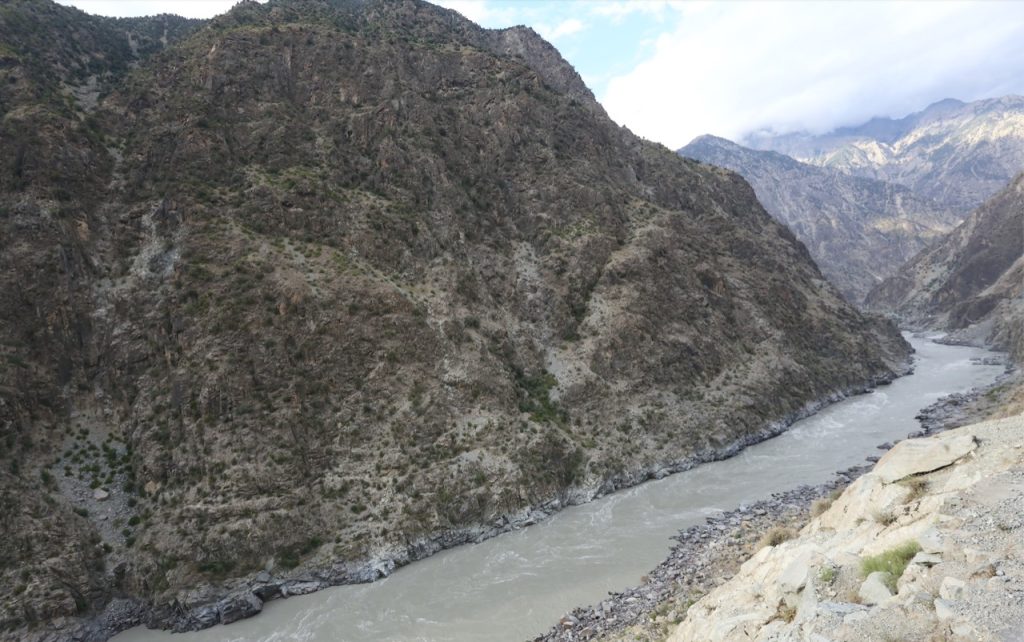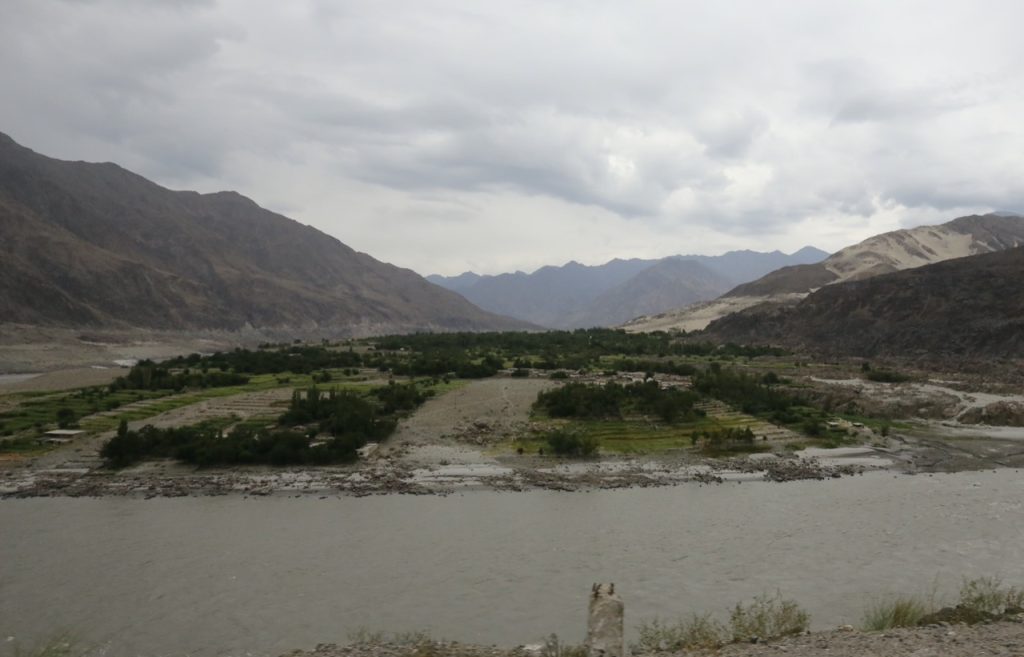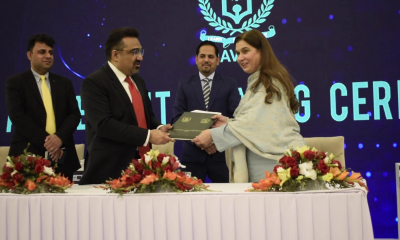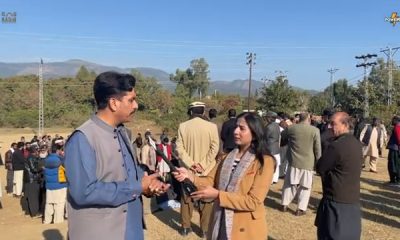RNN
Rivers Can Pull South Asian Rivals Together
Without letting rivers flow, it is nearly impossible to meet the Sustainable Development Goals, which include eradication of hunger and disease as…
Rivers Can Pull South Asian Rivals Together
Pakistan and India like many nations across the world have cut themselves off from nature by clearing jungles for the sake of agriculture. They built dams and a network of canals to transport water to the deserts, raise cash crops, and the banks to engage in stock trade and produce electricity to lighten cities and run the wheels of industry. The central idea was to store the rainwater to produce energy and feed crops, miles away in deserts.
The method in the madness
British Raj allotted Indus Basin lands to its loyal subjects given the royal ambitions associated with its foreign rule but a ‘development policy’ was passed on to the successor states, particularly Pakistan and India, when they were made free.
Those negotiating the Redcliff Award, which was meant to divide the culturally and geographically compact region of Punjab between Pakistan and India, utterly ignored the potential of the economic development paradigm of the British Raj to disrupt ties between the new neighbors. As it happened and is duly a matter of record, India stopped canals from Ferozepur headwork on the very pretext of why it should share the benefits of a facility that it now owned. Pakistan had to purchase the water till the signing of the Indus Waters Treaty (IWT).
The Indus Waters Treaty signed between Pakistan and India in 1960 was unjust and irrational in the sense that it ultimately stopped the flow of waters of the three eastern rivers of Pakistan — Beas, Ravi, and Sutlej — flowing into a dry region of Punjab. Sutlej, a perennial river, was the source of livelihood for Bahawalpur, a semi-desert region where a princely state had built barrages and canal networks to build its exemplary prosperity. Around 33 MAF lost to India due to IWT was not only necessary for rearing pulses, livestock, and fisheries – which meant food security for the eastern regions of Punjab but also for the survival of the Indus Delta, as well.
Indus Waters Treaty — A faulty approach to regional peace
The British Raj had not built dams and remained confined to the barrages only. However, after the partitioning of India and the subsequent emergence of water dispute between the successor states, the worries of the USA about regional peace brought forth a novel idea of building dams to regulate the Indus Basin waters.
Tennessee Valley Authority (TVA), which had been involved engineering companies to build a series of dams in America solely to produce electricity to make it available to the people at home, and had been instrumental in resolving conflicts between states actually brought Indus Basin with an area 417,654 sq. mi into the limelight to utilize its experiences. An ex-director of TVA, David E. Lilienthal, got around Nehru and Ayub Kahn to sit across the table and conclude the fateful treaty, which World Bank was ready to fund.
Environmental catastrophe
The World Bank and India funded the two dams and the link canals to compensate for the stoppage of three eastern rivers. The regions where the rivers flew to have witnessed the sinking down of the water table. The supplies of fisheries, dairy products, and pulses have come rarely. Poverty is touching extremes and the affected districts have been counted as the least developed vis-à-vis human indices and availability of clean drinking water. The dried regions affected by the Indus Waters Treaty are being threatened by deadly diseases like jaundice and cancer.
The waters of the Sutlej are allocated to India are now being mostly transported to the Rajasthan desert. India is planning to divert whatever is left in the Sutlej river to the Yamuna river instead of helping the lower riparian to sustain its aquatic life and recharge underground water. Indus Delta, with billions of dollars economic potential, remains dry for the most part of the year, precious aquatic life has been destroyed and the sea is menacingly devouring up fertile lands.
“Who has actually benefited from the water politics, is one question. The other is poverty and disease the canal system has brought in,” wonders Dr. Hassan Abbas, a hydrologist while authorities find helpless in addressing rising risks of food insecurity as the fisheries, dairy products, and pulses are getting out of the reach of the people.
Flood irrigation with a canal system is responsible for polluting the groundwater resources as the diseases brought with the foreign seeds demand mindless use of pesticides other than the sewage and industrial waste being released into the water bodies.
Deconstruction
Deconstruction is the word with hydrologists that provides the answer to the problem, which denies food security to the billions of South Asians right now. Without letting rivers flow, it is nearly impossible to meet the Sustainable Development Goals, which include eradication of hunger and disease as fundamental targets.
Letting rivers flow their natural course will store 400 MAF water in the aquatic corridor running along with them, and give a boost to forestry, fisheries, livestock, and pulses production other than creating the possibility of introducing a far cheaper inland transportation system – something which British Raj had benefited from.
Deconstruction of dams – which has become a norm in the world – is not merely a shift in the development paradigm but also a huge task for governments to undertake as a step towards sustainable growth. Why these projects were funded from abroad the major reason was their potential to produce electricity. Investing more dams, now, has become the biggest blunder for governments in the presence of solar and wind energy.
Most of the dams constructed by Pakistan and India are situated in the fault zone. Any unusual seismic activity can just bring disaster, at least in the immediate neighborhood of the water reservoirs. Commercial agriculture, whereby we produce tons of wheat at the cost of fisheries and pulses, too, is not sustainable other than being the major source of diseases for the poor folks. How dams can be responsible for flash floods can be gauged from the scale destruction that Bhakra dam has brought to the Indian Punjab in 2019 through a sudden release of waters after heavy rain in the catchment of the Sutlej River. The 2010 floods in Pakistan displaced at least 2 million people.
“To get around governments to keep rivers flowing, preferably on their old courses, for sustainable growth and prosperity for the common populace is a gigantic task,” cautions Dr. Hassan Abbas nowadays, putting the idea to get more crop by saving at least one-fifth of their water consumption into operation. And he points out the non-existence of nationalism in the decision-makers and also the fact that it is the major beneficiary of dams, constructed with foreign funds.
Water as an economic engine
Does ‘deconstruction’ mean reverting to the past practices associated with the utilization of rivers and getting closer to nature? Of course, it is so. We need forests, destroyed by the British Raj to promote agriculture, and getting back, once again, to inland navigation, the cheapest means of transporting goods to and from Kabul to the Arabian Sea.
Flowing rivers can provide a trade corridor and, consequently, inaugurate an era of peace and prosperity for the Indus basin. It requires Pakistan to engage in climate diplomacy and ‘constructively’ engage the neighbor on IWT. “If you want to really benefit from the country’s geographical location, the secret rests in the free-flowing rivers,” Dr. Hassan Abbas says wondering why Pakistan should not go alone even if the other party keeps on walking the suicidal course.
A paradigm shift in socio-economic development requires not only stopping to fund damned water storage projects but also pulling down the financial, legal, administrative, and political structures the colonialists built to take care of their royal concerns. Only unparalleled nationalistic fervor can put the states on the straight and rational and logical, path. Reforms mean nothing with deconstruction but a 360-degree revolution does.
Riaz Missen
…………









